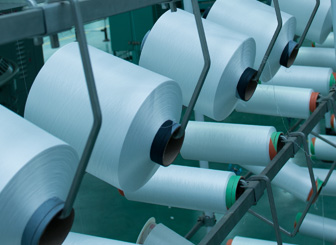Approaches to Value and Factors Considered with Synthetics, Cotton and Yarn
The textile industry has experienced radical changes in the last five years. A combination of increasing Asian competition along with currency devaluations and a weak U.S. dollar, contributed to the current price fluctuations and output decline in the U.S. textile and apparel industries. JCM checks the historical trend in the published price index of cotton, on a weekly basis and using a percentage of this index, as an advance rate, to help address and possibly mitigate this risk. Competition continues to shrink, with major synthetics, fabrics and greige goods customers exiting the marketplace. As the market continues to shrink, the absorption factor on the raw materials (synthetic/yarn and cotton) becomes more of a negative liquidation factor.

When appraising a Company that utilizes synthetics, yarn and/or cotton in manufacturing it is important to understand how the inventory is used in the manufacturing process. To that end, we also look at who would purchase the raw material inventory if a liquidation were to occur or how it would be consumed if a build out of raw materials to finished goods were to occur.
Warping – Depending on the type of fabric to be made, hundreds of spools of yarn are simultaneously rolled onto one large spool, which is referred to as a warp beam. This process is called warping. The number of spools of yarn used in a beam and the type of yarn (either all nylon, all polyester, or a combination of both) is determined by the product to be produced. Each fabric has a different combination of the type of yarn and the number of threads on a beam.
Weaving – Each warp thread is passed through one of two or more vertical frames called harnesses. The number of harnesses depends on the complexity of the weave. In the harness, each warp is threaded through a narrow opening in one of many strings or wires called heddles. The heddles hold the individual thread in place and prevent them from tangling. The warp threads then stretch over the weaving frame. The weaver then winds the weft thread around via air jet looms that transport the thread over and under the warp via air propulsion. The weaving process begins when the weaver lifts the harness that holds the odd-numbered threads. The weaver lowers the first harness and pushes the newly woven row into place with a device called the beater. The beater is in a frame located in front of and parallel to, the harnesses. It has comblike “teeth” made of steel wires that push each weft row compactly into place to tighten the weave. To weave the next row, the weaver raises the second harness and passes the shuttle through the sheet: The weaving of each row involves the same process. The finished cloth is wound around a bar called the apron beam, or cloth beam, at the front of the loom.
Things to remember
- Understand the operations of the Company.
- Be familiar with regional and/or seasonal market fluctuations.
- Understand the nomenclature and unit of measure.
- Determine the best market for each type of asset.
Testimonials
Thank you again for your fast turnaround on this deal. Because of your input and quick response, we were able to close as promised.
Key Terms When Appraising and Liquidating Synthetic Acetate and Polyester Fabrics
